Where did daylight saving come from and which states have it
Early in the morning on October 5, clocks move forward an hour across much of Australia.
Altering time is something countries do all over the globe. In Australia, the states and territories decide whether to move the dial on their time zone. Some states do daylight saving and some don’t.
Why not? What are the effects of daylight saving on animals and humans? Who had the original lightbulb moment to introduce it?
When is daylight saving and who has it?In the Australian states that have it, daylight saving â€" there’s no “s†on the end, although it’s often referred to as “savings†â€" always begins at 2am on the first Sunday in October and ends at 2am (which is 3am daylight saving time) on the first Sunday in April.
Governments can vary this for special occasions: the Olympics in September 2000 prompted early daylight saving in some states, and all states delayed the end of daylight saving for the Commonwealth Games in 2006.
People in Queensland, the Northern Territory, Western Australia, Christmas Island and the Cocos (Keeling) Islands don’t wind their clocks backwards and forwards.
In effect, Australia’s three standard time zones are split into five for the duration of daylight saving. (Different time zones apply again on Norfolk, Christmas, and Cocos islands.)
Queensland (UTC, or world time standard +10:00)
New South Wales (except Broken Hill), Victoria, Tasmania, ACT (UTC +11:00)
South Australia, Broken Hill (UTC +10:30)
Northern Territory (UTC +9:30)
Western Australia (UTC +8:00)
Around the world, more than 70 countries move their clocks back and forward each year, including the US, Canada, Mexico, New Zealand and even Antarctica â€" more than one billion people across the world are affected by the time changes.
China, Japan, India and most countries near the equator don’t fall back or jump ahead. In much of Asia and South America, the shift was adopted but then abandoned and it has never been observed in most of Africa.
In 2019, the European Parliament approved a measure to abolish the time change. “Numerous studies have failed to reach a conclusive outcome but indicate negative effects on human health,†the European Parliament members said. Yet the move has stalled amid post-Brexit discombobulation and the COVID pandemic.
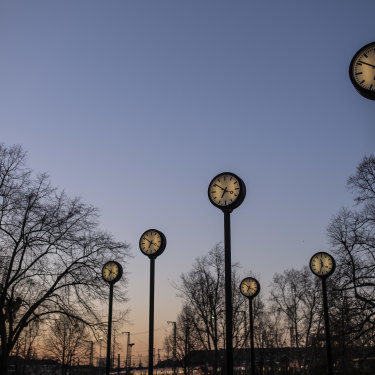
A clock art installation in Düsseldorf. Germany and Austria led the way with daylight saving as a wartime measure.Credit:Getty Images
Where did daylight saving come from?Insect expert George Vernon Hudson presented a paper to the Wellington Philosophical Society in New Zealand in 1895 proposing a two-hour move forward in October and a two-hour shift back in March. While his idea garnered some interest, it didn’t catch on.
The first place to actually go ahead with daylight saving was the former Canadian city of Port Arthur, on July 1 in 1908, after a local businessman urged the council to move the clocks forward in summer so children could enjoy an extra hour of sun. More Canadian towns followed. Germany and Austria pushed the clocks forward to reduce the use of artificial lighting to save fuel for the war effort in 1916. The United Kingdom, France, the United States and Australia quickly followed until the end of the war and introduced it again in World War II.
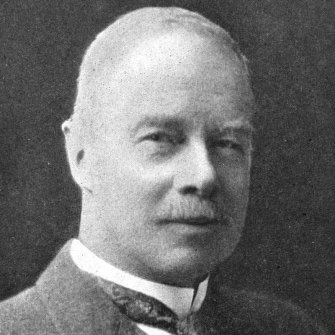
New Zealand insect expert and astronomer George Vernon Hudson.Credit:Wikipedia
But it was Tasmania that kick-started it yet again, in 1967, a move prompted by drought, wrote parliamentary librarian Terry Newman in 1984. “Water storage dropped alarmingly, thus power rationing, which had been used in 1951, 55 and 63, was mooted.â€
Most other states took it up in 1971 but Western Australia and the Northern Territory rejected the idea and, after trying it, Queensland abandoned it in 1972 and didn’t pick it up again, even after trying it between 1989 and 1992.
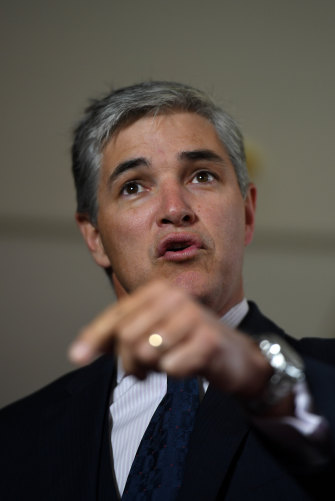
Queensland MP Robbie Katter says no to daylight saving.Credit:AAP
Why did Queensland and WA say no?South-east Queenslanders have mostly been in favour of daylight saving but their northern counterparts say it would mean an extra hour of sun during the scorching summer months. In 1992, Queenslanders were asked in a referendum, "Are you in favour of daylight saving?" â€" 45.5 said yes while 54.5 per cent said no.
In 2007, then-Premier Anna Bligh said south-east Queenslanders needed to take into account that places such as Cairns, Charleville and Mount Isa were hotter than places such as Brisbane and did not want an extra hour of daylight.
"The people of regional Queensland have not reached their view on daylight saving because they are stupid or because they are redneck or backward â€" they have reached this view on the basis of their experience of a climate in which they live," she said.
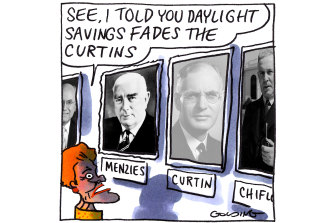
Illustration: Matt GoldingCredit:
The issue has been returned to several times, including with a proposal to create a separate time zone for south-east Queensland.
A trial was again raised last year by Brisbane Lord Mayor Adrian Schrinner, who said the previous referendum result was out of date.
But the MP for the northern Queensland seat of Traeger, Robbie Katter (son of MP Bob Katter) said “don’t poke the bearâ€. In October 2019, he told The Age and The Sydney Morning Herald that residents in the state’s north would “do nothing but suffer under daylight savingsâ€.
“The winding back of the clock by an hour in summer in Queensland represents something of convenience and leisure for the south-east but it would come at a huge cost to the north and also the state’s other rural and regional areas,†he said.
Katter said daylight saving would place “an enormous burden on the liveability and practicality†of working in the region, creating an extra hour of “stifling heat above 40 degreesâ€.
“It’s hard enough already to entice people to live in remote areas of Queensland to fill roles in even our primary services.â€
Premier Annastacia Palaszczuk has said it is not a priority for her government.
As for WA, a trial from 2006 to 2009 ended with the same outcome as in Queensland. At the time, one Perth man told WA Today that daylight saving “puts you in happy spirits rather than coming home in the dark†but a retired pensioner said she would vote no as “there was no need for WA to endure an extra hour of heat in the summerâ€.
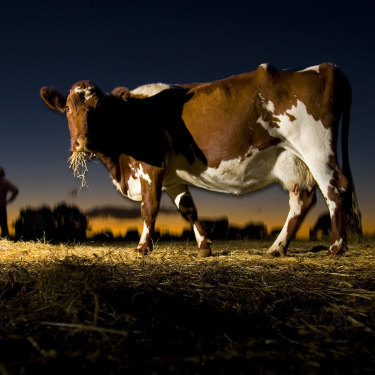
Are cows discombobulated by daylight saving?Credit:Craig Sillitoe
Does daylight saving confuse cows?Queenslander Basil Johnson attempted to sue the state government for $308 in damages for lost income in 1991 due to daylight saving. He said he suffered multiple abrasions when he tripped in the dark while herding the cows into the dairy. The wounds became infected and he wasn’t able to work for two weeks. “Whenever man makes laws which are against the laws of nature then he is utterly wrong as far as I am concerned,†he told The Age. “Not even the cows think it’s natural to do anything before sunrise. They don’t like falling all over the place and flipping about in the mud in the dark.â€
Johnson died in 2003 but his wife, Anicia, says his case ended up being dismissed by the court. “It was thrown out because of a technical error.â€
Dairy farmer Adrian Parkinson says his cows in Kirkstall, in south-west Victoria, get “a little mixed up†on the first morning the clocks moved back and can be “dopier than usual but it only takes a day to get back into their normal rhythmâ€.
“It’s fair to say you might get a little bit less milk that morning but you make up for it at the afternoon milking because they produce their milk over a 24-hour period.â€
“After [the first day], there’s no issues with them or their milk,†he says.

It takes a while to adjust to an hour less sleep.Credit:Shutterstock
Can daylight saving affect your health?It’s worse when daylight saving starts than when it ends. “We find it harder to spring forward than back,†says Australian Sleep Health Foundation spokeswoman Dr Amy Reynolds. “Our short-term functioning could be a bit impaired the next day and at night it can be harder to fall asleep if it is still light.â€
Reynolds says there is “a link to traffic accidents if you are tired but that is common at any time you are not getting enough sleepâ€. “The main take-home message is if you doing things that mean you are losing sleep, be mindful of the impact that can have when you are out on the road,†she says.
Dr Sveta Postnova, a senior lecturer in neurophysics and brain dynamics at the University of Sydney, says most people adjust relatively easily to the time changes but people can lose sleep for “at least a week†after the clocks are moved forward one hour. The autumn transition, on the other hand, is popularised as adding one hour to sleep time, she says, but data shows no evidence of extra sleep on that night.
This explainer was first published in October 2019 and has since been updated to reflect a delay in Europe stopping daylight saving.
0 Response to "Where did daylight saving come from and which states have it"
Post a Comment